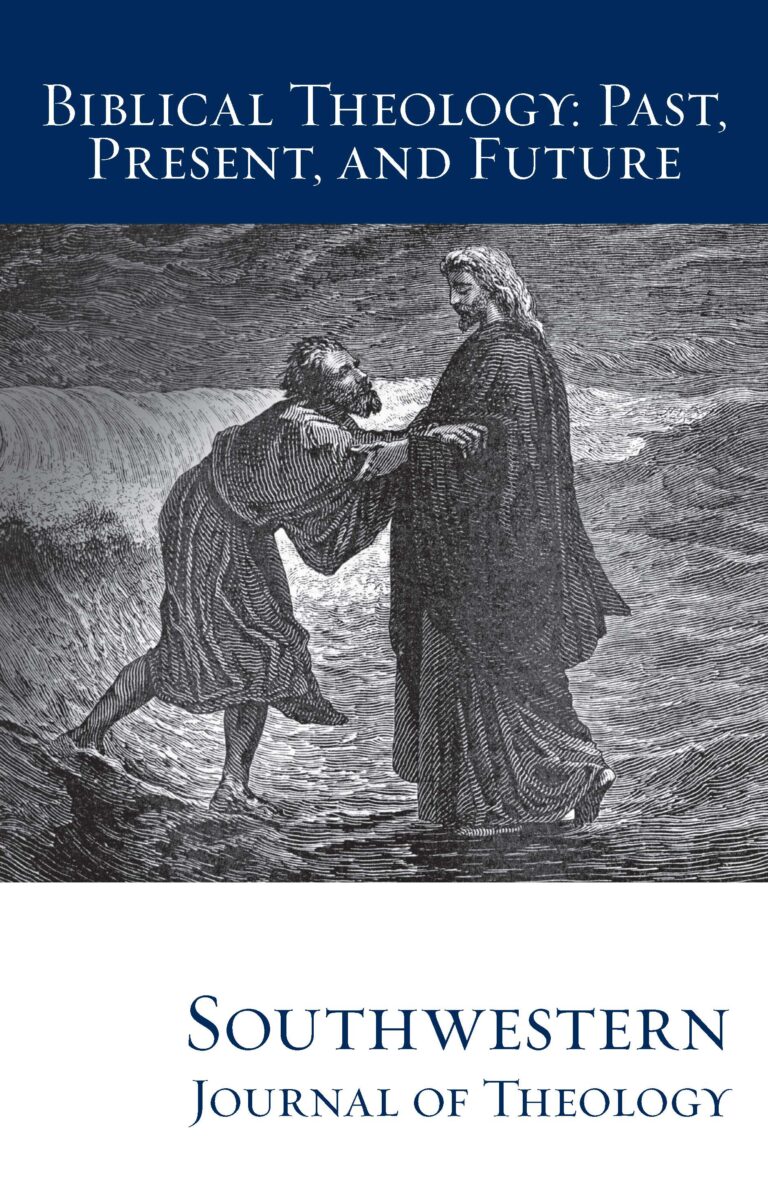
Biblical Theology: Past, Present, and Future (II)
Southwestern Journal of Theology
Volume 56, No. 1 – Fall 2013
Managing Editor: Terry L. Wilder
By Miles V. Van Pelt. Grand Rapids: Zondervan, 2010. 112 pages. Softcover, $12.99.
Miles V. Van Pelt is well aware of students’ struggles with English grammar and syntax as they study beginning Hebrew, Greek, and Aramaic. Van Pelt actually teaches all three languages at Reformed Theological Seminary (11). He sees that students are consistently learning just as much English as they are the Biblical languages. Many students may remember learning what an English participle is and how it functions—in Hebrew class. Van Pelt wrote this book to help students understand how their own language works to make studying Hebrew an easier and more enjoyable experience.
The book is laid out in fourteen brief chapters, explaining everything in English grammar from the alphabet to the verbal system. With each new concept of English grammar, Van Pelt subsequently explains how Hebrew is similar and dissimilar to English in that area. Each chapter is keyed to the relevant chapters in Van Pelt’s Basics of Biblical Hebrew Grammar, but the format allows it to be used in tandem with any basic grammar. The book is user-friendly enough to be read in its entirety before opening a Hebrew grammar, but would probably be most effective if read alongside a Hebrew grammar as the student progresses through it.
Learning Hebrew can be a nightmare for some students, so Van Pelt writes in a light-hearted and jovial manner to make students feel comfortable and perhaps even evoke a smile. Personal anecdotes, such as his editorial work on a church bulletin (38), and random jokes (“So, a man stormed into his doctor’s office . . .”) (64) allow the reader’s mind a rest for a moment after a section of grammatical information. The student will also be encouraged by Van Pelt’s uplifting words in each chapter, often pointing out that he is not presenting new information, but only placing “categories and labels” on what they already know intuitively (22). Multiple metaphors also turn this would-be stuffy English grammar into a more enjoyable and digestible work. For example, “Pronouns are the substitute teachers, surrogate mothers, pinch hitters, union scabs, and stunt doubles of the grammatical world” (47). And again, “[verbs] are the movers and shakers of the grammatical world. They are the electricity that runs through the sentence, causing the lights to go on as actions and ideas come to life” (63).
Rarely is Van Pelt confusing, although his discussion on verbal voice is somewhat so since he describes the active and passive voice as “actions that move away from the verbal subject” and “actions that move toward the verbal subject,” respectively (74). He neglects to mention intransitive verbs such as “to drift” and the student may be confused as he accidentally reverses the definitions on the next page (75). Nevertheless, the work as a whole is concise, clear, encouraging, and helpful. Since the book ends by explaining the verbal system, it prepares the student for all English grammatical concepts they will encounter in a Hebrew grammar. Professors would be wise to consider using this book for their first-semester Hebrew students. Not only will it prepare them by teaching them the English grammar they need to learn biblical Hebrew, but it will encourage them as they begin to study a difficult subject, one which is very daunting to many students.





